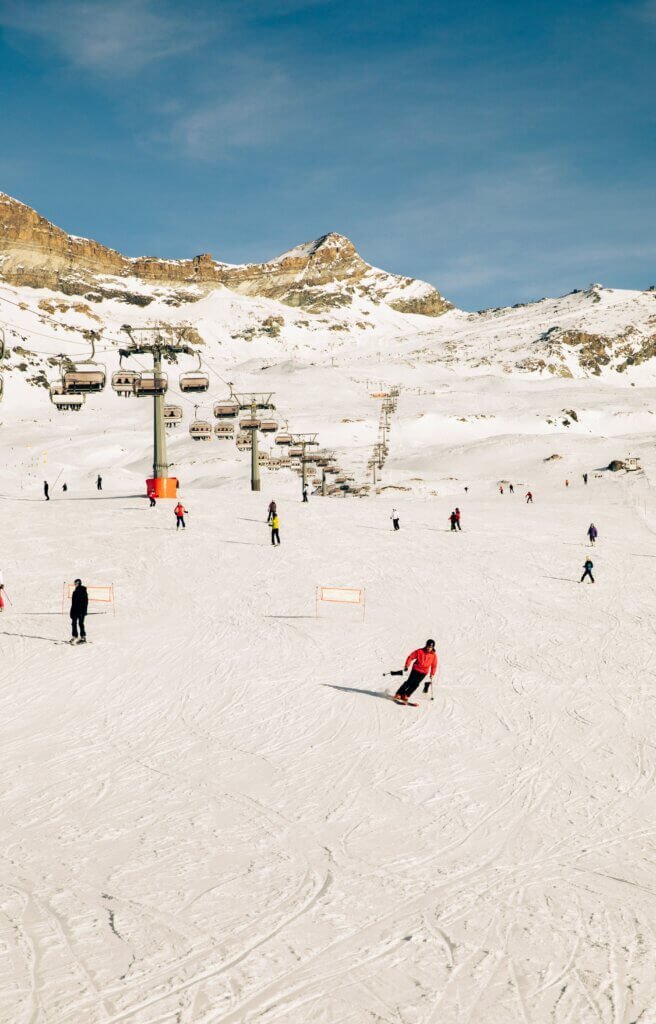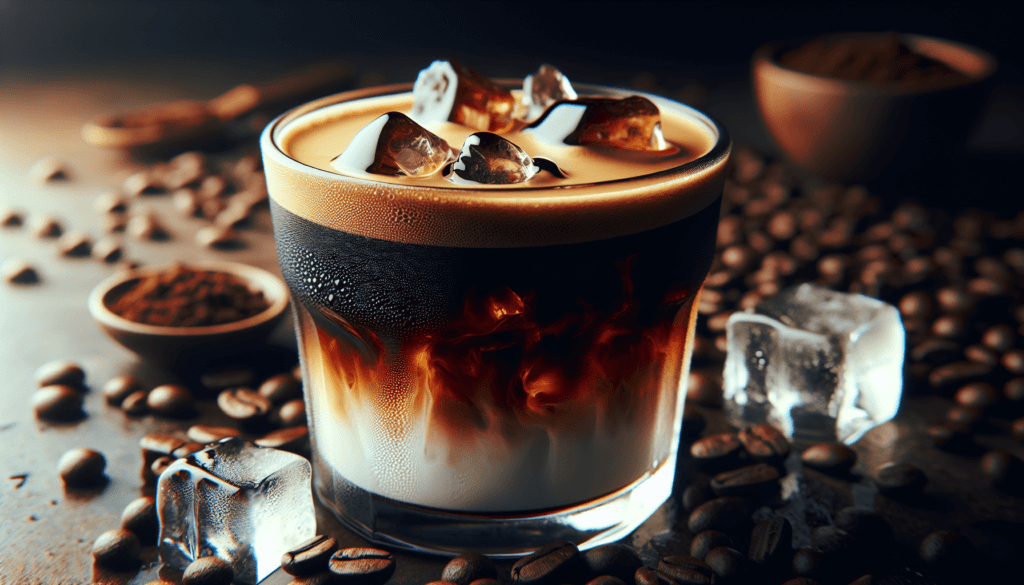So you’ve been craving a smooth and refreshing glass of iced coffee, but your attempts at brewing it at home haven’t turned out quite right. Fear not, because we’ve got you covered with some expert tips and techniques to perfect your iced coffee brewing game. Whether you prefer a strong and bold flavor or a milder and sweeter taste, we’ll walk you through different brewing methods that will guarantee a delicious and satisfying iced coffee experience. From cold brew to flash chilling, get ready to elevate your mornings with a perfectly brewed glass of iced coffee in hand.

Choosing the Right Coffee Beans
When it comes to making a great iced coffee, the first step is always choosing the right coffee beans. The flavor and quality of your coffee will greatly depend on the origin of the beans you select. Different regions, such as Colombia, Ethiopia, or Brazil, will produce beans with unique flavor profiles. Take some time to do a little research on the various coffee origins and their characteristics to find the perfect match for your taste preferences.
Selecting the Coffee Origin
The origin of the coffee beans plays a significant role in determining the flavor notes of your brew. Each region has its own distinct characteristics and taste profiles. For example, Ethiopian coffee often boasts bright and fruity flavors, while Colombian coffee tends to be more balanced and medium-bodied. Explore different origins to discover the flavors that appeal to you the most.
Deciding on the Roast Level
The roast level of your coffee beans can greatly impact the taste and strength of your iced coffee. Lighter roasts will retain more of the original flavors of the beans, providing a brighter and more acidic taste. Medium roasts strike a balance between the original flavors and the toasty notes from the roasting process. If you prefer a bolder, more robust flavor, opt for a darker roast. Experiment with different roast levels until you find the perfect balance for your iced coffee.
Opting for Single-Origin or Blend
Another important consideration when choosing coffee beans is whether to go for a single-origin or a blend. Single-origin beans come from a specific farm or region, allowing you to truly savor the unique flavors of that origin. On the other hand, blends combine beans from different regions, creating a well-rounded and balanced flavor profile. Decide whether you want to explore the distinct characteristics of a single-origin coffee or enjoy the complexity of a blended brew.
Considering the Flavor Profile
If you have a specific flavor preference in mind for your iced coffee, it’s worth considering the flavor profile of the coffee beans you choose. Coffee can have a wide range of flavor notes, from fruity and floral to chocolatey and nutty. Look for flavor descriptions on coffee packaging or consult with a local coffee roaster to ensure that the coffee beans you select align with your desired flavor profile. This way, you can achieve a refreshing and satisfying iced coffee experience.
Grinding and Measuring
To brew the best iced coffee, you’ll need to pay careful attention to the grinding and measuring process. These factors greatly influence the extraction and taste of your coffee, so it’s important to get them right.
Choosing the Right Grind Size
The grind size of your coffee beans is crucial, as it determines how quickly the flavors are extracted. For iced coffee, a coarser grind size is generally recommended. This helps reduce the chance of over-extraction, which can lead to a bitter and unpleasant taste. Aim for a grind size that is slightly finer than what you would use for a French press, but coarser than what you would use for drip coffee.
Determining the Coffee-to-Water Ratio
The coffee-to-water ratio is another crucial element in brewing a perfect iced coffee. It’s important to strike the right balance to achieve a flavorful yet well-balanced brew. A general starting point is using a ratio of 1:15, meaning 1 part coffee to 15 parts water. However, feel free to adjust this ratio according to your personal preference. If you prefer a stronger flavor, you can increase the amount of coffee used, or if you like a milder taste, decrease the amount.

Using a Digital Scale for Accuracy
For precise measurements, using a digital scale is highly recommended. Measuring your coffee and water by weight instead of volume ensures consistency and accuracy in your brewing process. Invest in a reliable digital scale that can handle small increments, as even slight variations in gram measurements can affect the overall taste of your iced coffee. This level of precision will elevate your brewing game and help you craft the perfect cup every time.
Cold Brew Method
Cold brew coffee has gained popularity due to its smooth and less acidic flavor. Understanding the cold brew process and mastering the technique is essential for creating a delicious iced coffee experience.
Understanding Cold Brew Process
Cold brew coffee is made by steeping coarse coffee grounds in cold water for an extended period, usually around 12 to 24 hours. During this time, the coffee slowly infuses into the water, resulting in a concentrate that can be diluted and enjoyed over ice. The longer steeping time and absence of heat produce a smooth, low-acid coffee with a rich and full-bodied flavor.
Choosing the Brewing Time
The brewing time for cold brew can vary depending on personal preference and the desired strength of the coffee. Experiment with different steeping times to find the ideal balance of flavor and strength. If you prefer a bolder and stronger brew, opt for a longer brewing time, but if you prefer a milder taste, a shorter steeping period will suffice.
Brewing with a Cold Brew System
Investing in a cold brew system can simplify the brewing process and make it more convenient. Cold brew systems typically consist of a container with a built-in filter, allowing you to easily separate the coffee grounds from the brewed concentrate. These systems also prevent any sediment or grit from ending up in your final cup. Consider purchasing a cold brew system, especially if you plan on making cold brew regularly.
Making Cold Brew Concentrate
Once the cold brew is ready, you’ll have a concentrated coffee that can be diluted to your desired strength. Start by diluting the concentrate with an equal amount of water or milk, and adjust from there based on your taste preferences. Cold brew concentrate can be stored in the refrigerator for up to two weeks, allowing you to enjoy a refreshing and flavorful iced coffee anytime you desire.
Japanese Iced Coffee
The Japanese iced coffee method offers a unique way to brew iced coffee that preserves the delicate flavors and aromatics of the coffee beans.
Exploring the Japanese Iced Coffee Method
Japanese iced coffee, also known as pour over iced coffee, involves brewing hot coffee directly onto ice. This method combines the best aspects of both hot and cold brewing, resulting in a balanced and vibrant iced coffee with enhanced clarity of flavors. By brewing the coffee directly onto ice, the extraction process is rapidly cooled, locking in the aromatics and flavors that would otherwise be lost during the slow cold brew process.

Preparing a Pour Over Setup
To brew Japanese iced coffee, you’ll need a pour over setup consisting of a pour over cone, paper filter, a decanter, and ice. Place the decanter filled with ice beneath the pour over cone to catch the brewed coffee. Make sure all your equipment is clean and ready before starting the brewing process.
Brewing Coffee onto Ice
Begin by adding ice to the decanter, enough to fill the desired serving size. Place a paper filter in the pour over cone and rinse it with hot water to eliminate any paper taste. Once the cone is preheated, add your preferred amount of ground coffee to the filter. Start by pouring a small amount of hot water over the coffee, allowing it to bloom and release its flavors. Then, gradually pour the rest of the water in a circular motion, ensuring an even extraction over the ice. The resulting brew will be chilled, smooth, and full of flavor.
Adjusting Water Amounts
The amount of water used in the Japanese iced coffee method can be adjusted to achieve different strengths and flavor profiles. If you prefer a stronger taste, decrease the water volume, or increase it for a milder brew. The key is to find the right balance that suits your preferences. Experimentation is encouraged to discover the perfect water-to-coffee ratio that results in your ideal cup of iced coffee.
Vietnamese Iced Coffee
Vietnamese iced coffee, also known as Ca Phe Sua Da, is a beloved drink known for its bold flavor and unique preparation method.
Learning about Vietnamese Iced Coffee
Vietnamese iced coffee traditionally uses dark-roasted coffee, often a blend of Robusta and Arabica beans, resulting in a strong and full-bodied brew. The coffee is brewed using a Vietnamese Phin filter, which is a small stainless steel drip filter that sits on top of a cup. The slow drip process allows the coffee to steep and slowly filter through into the cup, producing a rich and intense coffee concentrate.
Using a Vietnamese Phin Filter
To make Vietnamese iced coffee, place a few tablespoons of coarsely ground coffee into the Vietnamese Phin filter. Then, press the filter plate down gently to compact the coffee grounds. Position the filter on top of a cup filled with ice. Pour a small amount of hot water (about a quarter of the total volume) into the filter and allow the coffee to bloom for a few seconds. Slowly pour the rest of the hot water into the filter, and let it drip through onto the ice.
Mixing in Sweetened Condensed Milk
Traditionally, Vietnamese iced coffee is served with a generous amount of sweetened condensed milk at the bottom of the glass. The intense flavors of the coffee blend harmoniously with the creamy sweetness of the condensed milk, creating a delightful balance of tastes. Adjust the amount of condensed milk to your liking – you can start with a few tablespoons and add more as desired for a sweeter drink.
Adding Ice and Stirring
Once the coffee has finished dripping into the cup, give it a gentle stir to mix the coffee and condensed milk together. The stirring action helps the flavors combine and ensures an even distribution of sweetness throughout the drink. Finally, add a handful of ice to the cup to chill the coffee further and create a refreshing iced coffee to enjoy.

Flash Chilled Method
The flash chilled method offers a quick and efficient way to brew iced coffee, ideal for those who don’t have the time to wait for cold brew or prefer a stronger and more concentrated flavor.
Understanding the Flash Chilled Technique
The flash chilled technique involves brewing a highly concentrated coffee, often referred to as coffee concentrate, which is then rapidly cooled by pouring it over ice or using a chilling method. The resulting brew is bold, full-bodied, and perfect for diluting with cold water or milk.
Brewing Coffee Concentrate
To create coffee concentrate for the flash chilled method, use a higher coffee-to-water ratio than you would with normal brewing. A common ratio is around 1:4 – one part coffee to four parts water. Brew the coffee using your preferred brewing method, such as a French press or pour over, and allow the coffee to steep for the usual brewing time. Once brewed, let the coffee concentrate cool for a few minutes before moving on to the next step.
Cooling the Concentrate Quickly
Once the coffee concentrate has cooled slightly, it’s time to cool it down further using a rapid chilling method. There are several ways to achieve this, including pouring the coffee concentrate over a larger amount of ice, stirring it vigorously in a metal container surrounded by ice, or using an immersion chiller to rapidly lower the temperature. Choose the method that works best for you and your equipment.
Diluting with Cold Water or Milk
With the coffee concentrate chilled, it’s time to dilute it to your desired strength. Start by adding cold water or milk gradually and taste as you go until you achieve the perfect balance of flavor and strength. Remember that the coffee concentrate is quite strong, so it’s important to dilute it adequately to ensure a smooth and enjoyable iced coffee experience.
Iced Pour Over
If you enjoy the pour over coffee brewing method, you can adapt it to create a delicious iced coffee by incorporating a few key techniques.
Exploring the Iced Pour Over Method
The iced pour over method involves brewing hot coffee directly onto ice, similar to the Japanese iced coffee technique. By combining hot and cold brewing elements, you can achieve a well-rounded and aromatic iced coffee with a delicate balance of flavors.
Pre-chilling the Brewing Equipment
Before starting the brewing process, it’s important to pre-chill your brewing equipment to help maintain the proper temperature during the pour over process. Place your pour over cone, paper filter, and decanter in the refrigerator or freezer for a few minutes prior to brewing. This step ensures that the hot coffee adequately cools upon contact with the ice.

Using Ice as Part of the Brew
To begin the iced pour over process, add ice to the decanter to the desired serving size. Place a pre-rinsed paper filter in the chilled pour over cone. Add your preferred amount of ground coffee to the filter, making sure to use a slightly finer grind size than you would for cold brew. Start pouring hot water over the coffee, allowing it to bloom and release its flavors. Then, gradually pour the remaining water in a circular motion over the coffee and ice. The ice will help cool the coffee and preserve its delicate flavors.
Adapting Pour Over Techniques
The pour over method offers a lot of flexibility when it comes to customizing your iced coffee. You can experiment with different pour techniques, such as adjusting the flow rate or pouring in a spiral motion, to achieve different flavor profiles. Additionally, you can play around with the ratio of ground coffee to water and the brewing time to achieve the desired strength and taste. Don’t be afraid to get creative and adapt the pour over technique to suit your preferences.
Using a Coffee Maker
If you prefer a simpler and more convenient method for making iced coffee, using a coffee maker can be a great option.
Utilizing a Drip Coffee Maker
Most drip coffee makers have the capability to make hot coffee, but they can also be used to make delicious iced coffee. Start by filling the coffee maker with the desired amount of water, and then add the appropriate amount of ground coffee to the filter. If you prefer a stronger brew, you can increase the amount of coffee used. Once the coffee is brewed, allow it to cool slightly before moving on to the next step.
Adding Ice to the Coffee Pot
To make iced coffee with a coffee maker, simply fill a glass or pitcher with ice and place it under the coffee pot’s spout. Slowly pour the brewed coffee over the ice, allowing it to cool the coffee and melt slightly. The amount of ice used can vary depending on how strong or diluted you prefer your iced coffee. You may need to adjust the amount of ice and coffee to find the perfect balance.
Adjusting Coffee Strength
One advantage of using a coffee maker is the ability to adjust the strength of your iced coffee easily. If you find that your coffee is too strong, you can dilute it with cold water or milk to achieve a milder flavor. On the other hand, if you prefer a stronger taste, you can decrease the amount of ice used, allowing the coffee to remain more concentrated. Experiment with different ratios until you find the strength that suits your preference.
Important Considerations
When using a coffee maker to brew iced coffee, it’s important to consider the temperature and equipment used. Make sure the coffee is not piping hot when pouring it over the ice, as this can cause the ice to melt quickly and dilute the coffee. Additionally, ensure that your coffee maker is clean and functioning properly to avoid any unwanted flavors or complications. Regularly clean and maintain your coffee maker to ensure consistently great-tasting iced coffee.
Blending with Milk or Cream
For those who prefer a creamier and indulgent iced coffee experience, blending coffee with milk or cream can create a truly satisfying treat.
Choosing the Right Milk or Cream
The choice of milk or cream greatly impacts the taste and texture of your iced coffee. Opt for milk or cream that complements the flavor profile of your coffee. Dairy options like whole milk, half-and-half, or heavy cream offer a rich and velvety texture. Non-dairy alternatives like almond milk, oat milk, or coconut milk can add a unique flavor and creaminess to your drink. Experiment with different options to find the perfect pairing for your taste buds.
Blending with Ice for a Creamy Texture
To achieve a creamy and smooth consistency, blend your coffee with ice for a frosty treat. Start by brewing a strong cup of hot coffee using your preferred brewing method. Allow the coffee to cool slightly and pour it into a blender. Add a handful of ice cubes for every cup of coffee, along with your desired amount of milk or cream. Blend on high speed until the ice is fully crushed and the mixture becomes thick and frothy. Pour the blended concoction into a glass filled with additional ice cubes for a refreshing and creamy iced coffee.
Experimenting with Flavored Syrups
For an added touch of sweetness and flavor, consider experimenting with flavored syrups in your iced coffee. Flavored syrups come in a wide variety, including classics like vanilla and caramel, as well as unique options such as lavender or hazelnut. Simply add a small amount of syrup to your brewed coffee, either before or after adding ice, and give it a gentle stir to incorporate the flavors. Start with a small amount and adjust to taste, as flavored syrups can quickly overpower the natural flavors of the coffee.
Creating Artful Layering
To take your iced coffee presentation to the next level, consider creating artful layering by pouring liquids with different densities into your glass. Start with the heaviest ingredient, such as sweetened condensed milk or flavored syrup, then carefully pour brewed coffee over it, followed by the milk or cream of your choice. Each layer will settle distinctively, creating an eye-catching and visually appealing iced coffee that’s as beautiful as it is delicious. Experiment with different colors and textures to craft your own signature layered iced coffee masterpiece.
Garnishing and Serving
To enhance the visual appeal and overall experience of your iced coffee, garnishing and serving techniques can make a significant difference.
Adding Garnishes for Visual Appeal
Garnishes are a simple yet effective way to make your iced coffee visually appealing. Consider topping your drink with a sprinkle of cocoa powder, cinnamon, or nutmeg for a touch of elegance. You can also add a few coffee beans or chocolate shavings on top for an extra touch of sophistication. Remember that the garnishes are not only visually appealing but also contribute to the overall flavor profile of your iced coffee.
Using Whipped Cream and Sprinkles
For a more indulgent and decadent treat, top your iced coffee with a generous dollop of whipped cream. The creamy texture and slightly sweet taste of whipped cream pair perfectly with the rich flavors of the coffee. To add a playful and colorful touch, sprinkle some colored sugar, chocolate shavings, or rainbow sprinkles on top. This whimsical presentation will make your iced coffee extra enticing.
Using Colorful Straws or Stirrers
To make your iced coffee more fun and visually appealing, consider using colorful straws or stirrers. Choose straws in vibrant hues or with unique patterns to add a pop of color to your drink. You can also use decorative stirrers or swizzle sticks, such as those adorned with mini umbrellas or fruit-shaped designs. These small details can turn an ordinary iced coffee into a delightful and Instagram-worthy beverage.
Chilling and Presenting the Drink
Lastly, don’t forget to chill your iced coffee properly before serving. Ensure that your coffee is fully cooled by either refrigerating it for a short period or adding enough ice to achieve the desired chill. Once properly chilled, pour the iced coffee into a stylish glass or mason jar, taking care to incorporate any artful layers or garnishes. Consider serving your iced coffee on a tray alongside a saucer and a napkin for an elegant and polished presentation. With these final touches, your iced coffee will be ready to delight both your taste buds and your eyes.
In conclusion, there are numerous brewing techniques and methods to create a delicious and refreshing iced coffee. From choosing the right coffee beans and determining the flavor profile to selecting a brewing method that suits your preferences, each step plays a crucial role in the final result. Whether you prefer the smoothness of cold brew, the bright flavors of Japanese iced coffee, or the boldness of Vietnamese iced coffee, there is a brewing technique to suit every palate. Experiment with different methods, ratios, and ingredients to find your perfect iced coffee recipe, and don’t forget to add your own creative touch to make each cup a work of art. Cheers to enjoying the perfect, icy-cold coffee experience!


